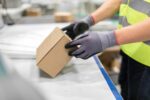
Visit Our Sponsors |
|
|
|
|
|
|
|
|
|
|
|
|
|
|
|
|
|
|
|
|
|
|
|
|
|
|
|
|
|
|
|
|
|
|
|
|
|
|
|
|
|
|
|
|
|
|
|
|
|
|
|
|
|
|
|
|
|
|
|
|
|
|
|
|
|
|
“Words fail me. It’s insanity,” said Sanford C. Bernstein & Co.’s Max Warburton, who benchmarked auto-assembly plants around the world before becoming a financial analyst.
Inside the tent in Fremont, Calif., is an assembly line Musk hastily pulled together for the Model 3. That’s the electric car that is supposed to vault Tesla from niche player for the wealthy to high-volume automaker, bringing a more affordable electric vehicle to the masses.
Tesla has had a heck of a time making the leap. Musk’s expectation two years ago was that 100,000 to 200,000 Model 3s would be produced in the second half of 2017. Just 9,766 rolled out in the first quarter — a weekly output rate of roughly 750.
Hence, apparently, the tent. Musk announced it on Twitter on June 16, saying the company had put together an “entire new general assembly line” in three weeks with spare parts; the building permit was issued on June 13, though the company could have started working on aspects of the project before that.
RELATED CONTENT
RELATED VIDEOS
Timely, incisive articles delivered directly to your inbox.






